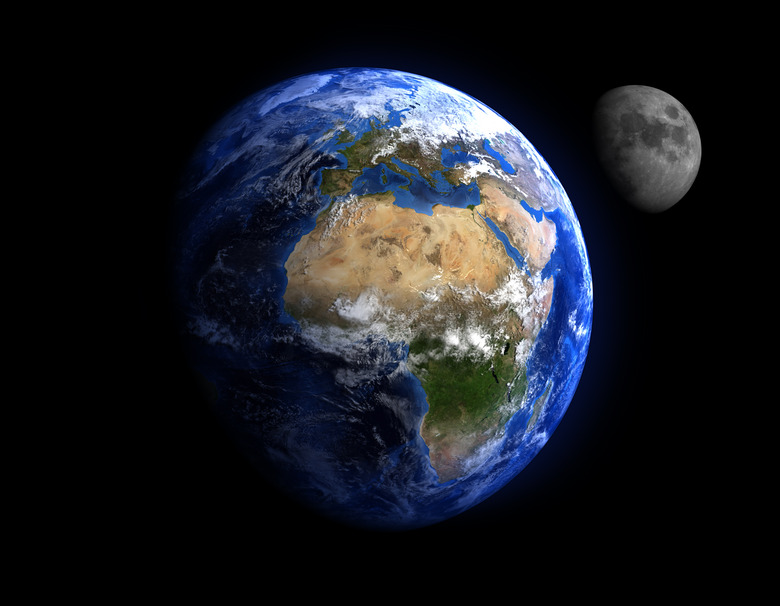Two Factors That Affect How Much Gravity Is On An Object
Gravity is the force that gives weight to objects and causes them to fall to the ground when dropped. Two major factors, mass and distance, affect the strength of gravitational force on an object. You witness the first factor in everyday life – more massive objects are heavier. The second factor, distance, is less familiar, as it takes a distance of many thousands of kilometers to significantly weaken the pull of Earth's gravity. Newton's law of gravitation describes very accurately how mass and distance affect the force of gravity.
Newton's Law of Gravitation
Newton's Law of Gravitation
Newton's law of universal gravitation states that the gravitational force between two objects is proportional to the mass of both objects, divided by the square of the distance between the objects. Or more simply:
\(F=\frac{Gm_1m_2}{d^2}\)
where G is Newton's gravitational constant, m1 and m2 are the masses, and d is the distance between them. You can use this law to work out how much gravity is on an object.
Mass of Objects
Mass of Objects
The mass of the two objects, denoted in the above equation as m1 and m2, is the first factor that affects the amount of gravity that acts on each of the objects. The larger the masses, the more gravitational force each object exerts on the other. Put simply: the more mass an object has, the more gravity acts on that object.
Distance Between Objects
Distance Between Objects
The second factor that affects the amount of gravity on each object is the distance between the two objects. The larger the distance, the less gravitational force each object exerts on the other. This means that the closer one object is to another, the more gravity acts on that object.
Gravity on Earth
Gravity on Earth
Because the Earth is large and massive, you can use a simplified version of Newton's law to determine the gravitational force on an object. In this case, the force is equal to the mass of the object multiplied by the gravitational acceleration at the Earth's surface:
\(F=mg\)
where g is the gravitational acceleration: 9.81 meters per second squared. On Earth, mass is the only factor that affects the gravitational force. Gravity affects an object with a large mass more than it affects an object with a small mass.
You can apply the same formula to finding the force of gravity acting on objects on other planets and moons, but the gravitational acceleration differs for each planet or moon.
Cite This Article
MLA
Woodhouse, Emma. "Two Factors That Affect How Much Gravity Is On An Object" sciencing.com, https://www.sciencing.com/two-affect-much-gravity-object-8612876/. 7 December 2020.
APA
Woodhouse, Emma. (2020, December 7). Two Factors That Affect How Much Gravity Is On An Object. sciencing.com. Retrieved from https://www.sciencing.com/two-affect-much-gravity-object-8612876/
Chicago
Woodhouse, Emma. Two Factors That Affect How Much Gravity Is On An Object last modified March 24, 2022. https://www.sciencing.com/two-affect-much-gravity-object-8612876/
